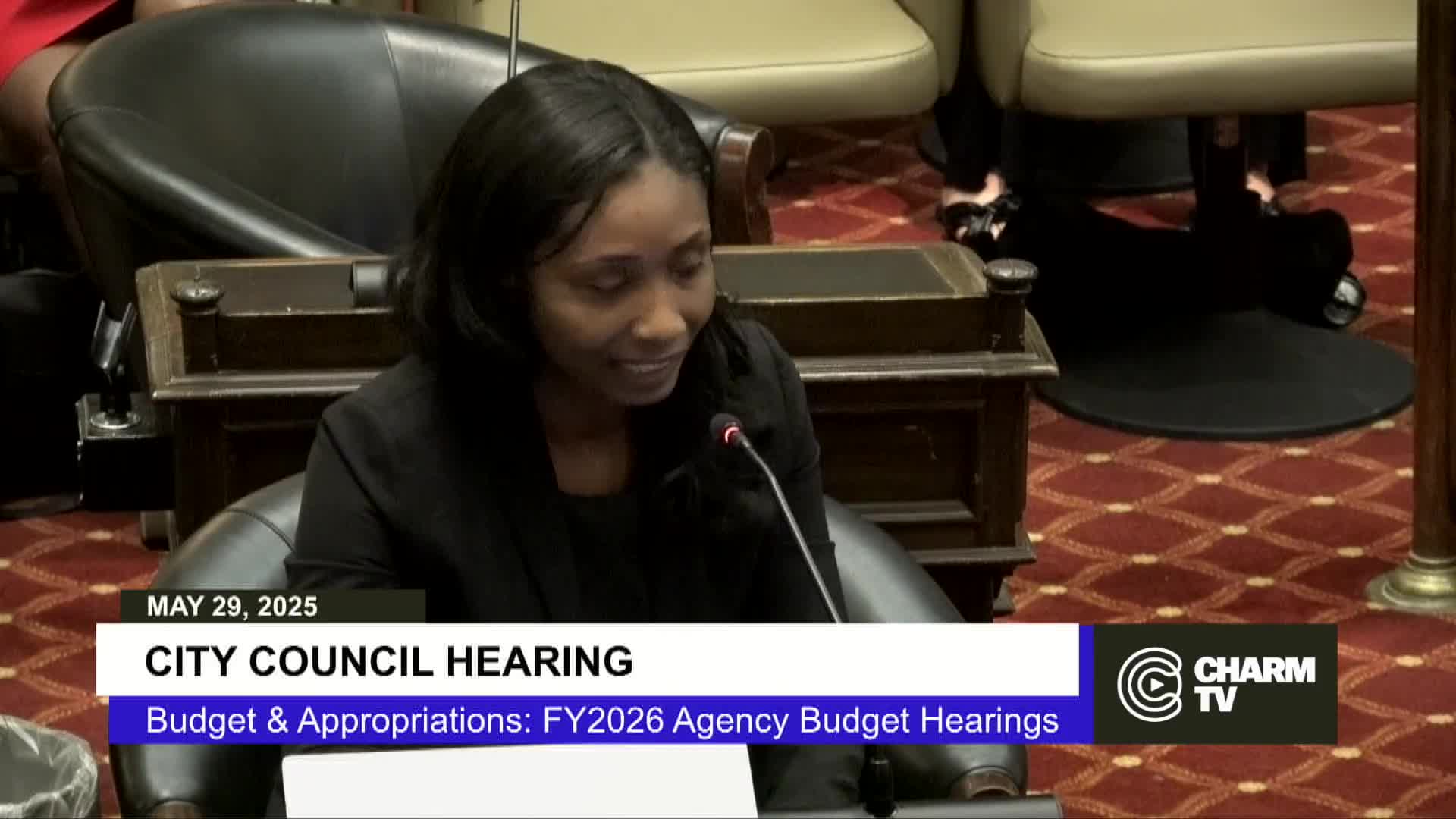Baltimore's 911 Director Reddick highlights technology advancements in emergency response
May 30, 2025 | Baltimore City, Baltimore County, Maryland
This article was created by AI summarizing key points discussed. AI makes mistakes, so for full details and context, please refer to the video of the full meeting. Please report any errors so we can fix them. Report an error »

During the recent City Council hearing on the FY2026 budget, the spotlight shone brightly on Baltimore's 911 call center, with Director Tania Reddick highlighting significant technological advancements that are transforming emergency response in the city.
Reddick praised the ongoing innovations, particularly the successful implementation of geofencing technology during the recent Artscape event. This system allowed call takers to focus solely on emergencies within designated zones, enhancing response efficiency. "We had our remote stations up located in the EOC," Reddick explained, emphasizing how this setup ensured that emergency calls were managed effectively during the high-traffic event.
The 911 system itself is also undergoing a major upgrade, transitioning to a cloud-based infrastructure that improves location accuracy for emergency calls. Reddick noted that this Next Generation technology positions Baltimore as a leader in public safety communications, stating, "911 in Baltimore City is the driving force for technology."
Additionally, the integration of artificial intelligence is streamlining operations, with features like phone transcription and translation services being introduced to assist non-English speaking callers. Reddick assured council members that the system is fully operational and ready to handle emergencies without interruption.
As the city continues to invest in these critical technologies, the focus remains on ensuring that all residents and visitors feel safe and supported when they reach out for help. The advancements in Baltimore's 911 services not only enhance public safety but also reflect a commitment to embracing innovation in emergency response.
Reddick praised the ongoing innovations, particularly the successful implementation of geofencing technology during the recent Artscape event. This system allowed call takers to focus solely on emergencies within designated zones, enhancing response efficiency. "We had our remote stations up located in the EOC," Reddick explained, emphasizing how this setup ensured that emergency calls were managed effectively during the high-traffic event.
The 911 system itself is also undergoing a major upgrade, transitioning to a cloud-based infrastructure that improves location accuracy for emergency calls. Reddick noted that this Next Generation technology positions Baltimore as a leader in public safety communications, stating, "911 in Baltimore City is the driving force for technology."
Additionally, the integration of artificial intelligence is streamlining operations, with features like phone transcription and translation services being introduced to assist non-English speaking callers. Reddick assured council members that the system is fully operational and ready to handle emergencies without interruption.
As the city continues to invest in these critical technologies, the focus remains on ensuring that all residents and visitors feel safe and supported when they reach out for help. The advancements in Baltimore's 911 services not only enhance public safety but also reflect a commitment to embracing innovation in emergency response.
View full meeting
This article is based on a recent meeting—watch the full video and explore the complete transcript for deeper insights into the discussion.
View full meeting
